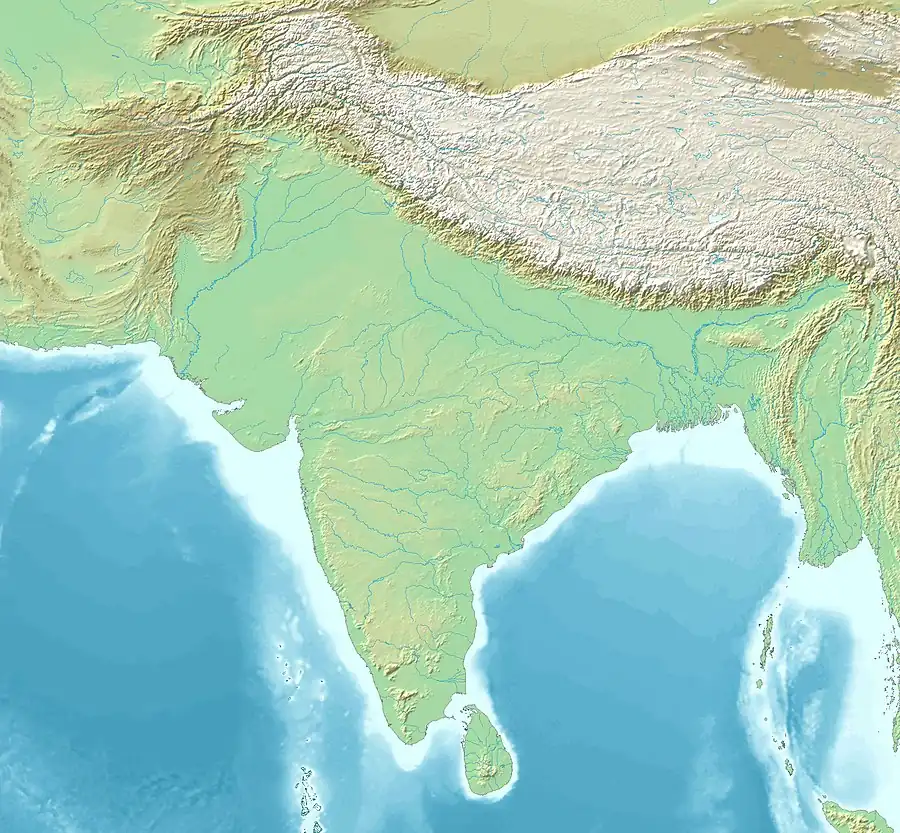| Javukha | |
|---|---|
| Ruler of the Alchon Huns | |
 Silver coin of Javukha, copying a Gupta horse type coinage. Obverse: King on horse with sun symbol, Brahmi legend around shahi javu-kha   Approximate location of Javukha's territory | |
| Reign | 5th century CE |
| Alchon Huns (400–670 CE) | ||||||||||||||||||||||||||||||||||||||||||
|---|---|---|---|---|---|---|---|---|---|---|---|---|---|---|---|---|---|---|---|---|---|---|---|---|---|---|---|---|---|---|---|---|---|---|---|---|---|---|---|---|---|---|
|
||||||||||||||||||||||||||||||||||||||||||
Javukha (Brahmi: ![]()
![]()
![]() Ja-vu-kha, Bactrian: Zabocho, or Zabokho)[3] was the third known king of the Alchon Huns, in the 5th century CE.[3] He is described as such in the Talagan copper scroll inscription, where he is also said to be Maharaja ("Great King"), and the "son of Sadavikha".[1] In the scroll he also appears to be rather contemporary with Toramana.[1]
Ja-vu-kha, Bactrian: Zabocho, or Zabokho)[3] was the third known king of the Alchon Huns, in the 5th century CE.[3] He is described as such in the Talagan copper scroll inscription, where he is also said to be Maharaja ("Great King"), and the "son of Sadavikha".[1] In the scroll he also appears to be rather contemporary with Toramana.[1]
Coin types
Javukha issued coins in the Bactrian script as well as in the Brahmi, suggesting a regnal claim to areas both north and south of the Hindu Kush, from Bactria to Northern Pakistan.[3]
He issued some silver coins in which he is shown riding a horse, copying a Gupta horse type coinage which appears on the coins of Chandragupta II (r. 380-413 CE) or Kumaragupta I (r. 415-455 CE).[1]
 Coin of Javukha with portrait, Brahmi legend to right shahi javu-kha
Coin of Javukha with portrait, Brahmi legend to right shahi javu-kha



 . The reverse normally shows a fire altar, flanked by armed attendants, a Sasanian coinage symbolism.[3]
. The reverse normally shows a fire altar, flanked by armed attendants, a Sasanian coinage symbolism.[3] Scyphate gold coin of Javukha in Kushan style, with Bactrian legend. Reverse: siva standing facing, holding diadem and trident. Gandhara mint. 5th century CE
Scyphate gold coin of Javukha in Kushan style, with Bactrian legend. Reverse: siva standing facing, holding diadem and trident. Gandhara mint. 5th century CE Coin of Javukha on horse. Sasanian-style fire altar with attendants on the reverse.
Coin of Javukha on horse. Sasanian-style fire altar with attendants on the reverse.
References
- 1 2 3 4 Rezakhani, Khodadad (2017). ReOrienting the Sasanians: East Iran in Late Antiquity. Edinburgh University Press. p. 111. ISBN 9781474400305.
- ↑ "Then we find coins inscribed Shahi Javukha or Shahi Javuvla. The attribution of these coins to Toramana is doubtful. His coins are only in silver and copper: no gold coins of his time have so far been found." in Litvinskii, Boris Anatolevich; Zhang, Guanda; Samghabadi, R. Shabani (1996). The Crossroads of Civilizations: A.D. 250 to 750. Unesco. p. 175. ISBN 9789231032110.
- 1 2 3 4 Rezakhani, Khodadad (2017). ReOrienting the Sasanians: East Iran in Late Antiquity. Edinburgh University Press. pp. 118–119. ISBN 9781474400305.
This article is issued from Wikipedia. The text is licensed under Creative Commons - Attribution - Sharealike. Additional terms may apply for the media files.